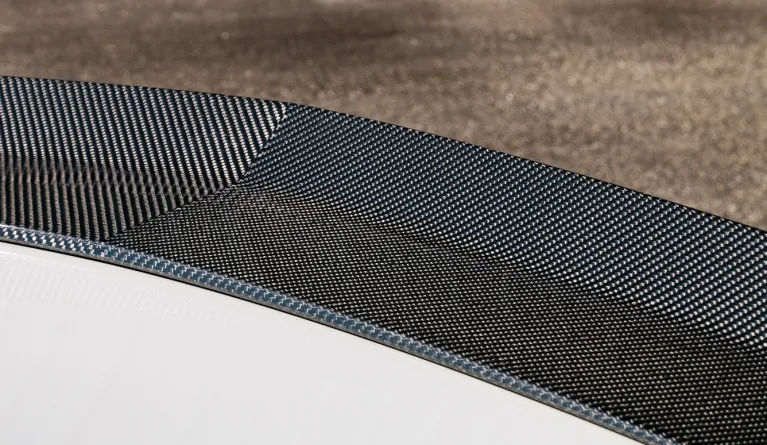How is carbon fibre made?
Also called graphite fibre or carbon graphite, carbon fibre is made of very thin strands of the element carbon. Carbon fibres have a high tensile strength and are very strong for their size. It is also a very lightweight material.
Each fibre is 5-10 microns in diameter. To give a sense of how small that is, one micron is 0.001 millimetres. One strand of spider web silk is between 3 and 8 microns.
Carbon fibre characteristics and application
Carbon fibres are twice as stiff and five times as strong as steel. Another characteristic is that they are highly chemically resistant and have a high-temperature tolerance with low thermal expansion.
Carbon fibres are important engineering materials when it comes to building airplanes, high-performance vehicles, sporting equipment and musical instruments, among many other things.
PAN process: how carbon fibre is made
Carbon fibre is made from organic polymers. These polymers consist of long strings of molecules held together by carbon atoms. About 90 percent of carbon fibres are made by using the polyacrylonitrile (PAN) process. The remaining 10 percent are made using either the rayon or petroleum pitch process.
Gases, liquids and other materials used in the manufacturing process create certain effects, qualities and grades of carbon fibre. The highest grade carbon fibre with the best modulus properties are used in demanding applications, such as in the aerospace industry.
Carbon fibre manufacturers differ from one another in terms of the combinations of raw materials they use. They usually treat their specific formulations as trade secrets.
Carbon fibre manufacturing process
In the carbon fiber production process, the raw materials, called precursors, are drawn into long strands of fibres. The fibres are then woven into a fabric. They can also be combined with other materials that are filament wound or molded into desired shapes and sizes.
The manufacturing process is as follows:
- Spinning - PAN mixed with other ingredients and spun into fibres, which are washed and stretched.
- Stabilizing - Chemical alteration to stabilise bonding.
- Carbonizing - Stabilised fibres heated to a very high temperature to form tightly bonded carbon crystals.
- Treating the surface - The surface of fibres is oxidised to improve bonding properties.
- Sizing - Fibres are coated and wound onto bobbins. These are then loaded onto spinning machines that twist the fibres into different size yarns.
Instead of being woven into fabrics, fibres may be formed into composites. To form composite materials, heat, pressure or a vacuum can be used to bind fibres together with a plastic polymer.
Things to take into consideration
The manufacture of carbon fibres carries a number of challenges, including:
- the need for more cost-effective recovery and repair;
- the surface treatment process must be carefully regulated to avoid creating pits that could result in defective fibres;
- close control is required to ensure consistent quality;
- arcing and shorts in electrical equipment because of the strong electro-conductivity of carbon fibres;
- health and safety issues, e.g., skin irritation and breathing problems.
The future of carbon fibre
The carbon fibre market was estimated at USD 4.7 billion in 2019 and is projected to reach USD 7.8 billion by 2024, at a CAGR of 10.6%. The carbon fibre market is growing due to its increasing demand from the aerospace and defense industries, as well as the automotive and wind energy industries. (source: https://www.prnewswire.com/news-releases/global-7-8-billion-carbon-fiber-market-forecast-to-2029---potential-opportunities-in-new-applications-such-as-geo-polymer-and-medical-composites-300931306.html)
To accomplish this, costs must be reduced and new applications targeted.
Degree programme Lightweight Engineering & Composites
We appreciate you taking the time to read our blog post. If you’re thinking about studying abroad, take a look at our Master’s degree in Composites.
At PFH, we make sure you have the best possible study abroad experience!
